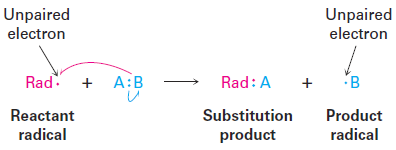

علم الكيمياء

تاريخ الكيمياء والعلماء المشاهير

التحاضير والتجارب الكيميائية

المخاطر والوقاية في الكيمياء

اخرى

مقالات متنوعة في علم الكيمياء

كيمياء عامة


الكيمياء التحليلية

مواضيع عامة في الكيمياء التحليلية

التحليل النوعي والكمي

التحليل الآلي (الطيفي)

طرق الفصل والتنقية


الكيمياء الحياتية

مواضيع عامة في الكيمياء الحياتية

الكاربوهيدرات

الاحماض الامينية والبروتينات

الانزيمات

الدهون

الاحماض النووية

الفيتامينات والمرافقات الانزيمية

الهرمونات


الكيمياء العضوية

مواضيع عامة في الكيمياء العضوية

الهايدروكاربونات

المركبات الوسطية وميكانيكيات التفاعلات العضوية

التشخيص العضوي

تجارب وتفاعلات في الكيمياء العضوية


الكيمياء الفيزيائية

مواضيع عامة في الكيمياء الفيزيائية

الكيمياء الحرارية

حركية التفاعلات الكيميائية

الكيمياء الكهربائية


الكيمياء اللاعضوية

مواضيع عامة في الكيمياء اللاعضوية

الجدول الدوري وخواص العناصر

نظريات التآصر الكيميائي

كيمياء العناصر الانتقالية ومركباتها المعقدة


مواضيع اخرى في الكيمياء

كيمياء النانو

الكيمياء السريرية

الكيمياء الطبية والدوائية

كيمياء الاغذية والنواتج الطبيعية

الكيمياء الجنائية


الكيمياء الصناعية

البترو كيمياويات

الكيمياء الخضراء

كيمياء البيئة

كيمياء البوليمرات

مواضيع عامة في الكيمياء الصناعية

الكيمياء الاشعاعية والنووية
Radical Reactions
المؤلف:
John McMurry
المصدر:
Organic Chemistry
الجزء والصفحة:
9th. p 152
12-5-2017
2821
Radical Reactions
Radical reactions are not as common as polar reactions but are nevertheless important in some industrial processes and biological pathways. Let’s see briefly how they occur.
A radical is highly reactive because it contains an atom with an odd number of electrons (usually seven) in its valence shell, rather than a stable, noblegas octet. A radical can achieve a valence-shell octet in several ways. For example, the radical might abstract an atom and one bonding electron from another reactant, leaving behind a new radical. The net result is a radical substitution reaction.

Alternatively, a reactant radical might add to a double bond, taking one electron from the double bond and yielding a new radical. The net result is a radical addition reaction.

An example of an industrially useful radical reaction is the chlorination of methane to yield chloromethane. This substitution reaction is the first step in the preparation of the solvents dichloromethane (CH2Cl2) and chloroform (CHCl3).

Like many radical reactions in the laboratory, methane chlorination requires three kinds of steps: initiation, propagation, and termination.
Initiation Irradiation with ultraviolet light begins the reaction by breaking
the relatively weak Cl-Cl bond of a small number of Cl2 molecules to give a few reactive chlorine radicals.

Propagation Once produced, a reactive chlorine radical collides with a methane molecule in a propagation step, abstracting a hydrogen atom to give HCl and a methyl radical (·CH3). This methyl radical reacts further with Cl2 in a second propagation step to give the product chloromethane plus a new chlorine radical, which cycles back and repeats the first propagation step. Thus, once the sequence has been initiated, it becomes a selfsustaining cycle of repeating steps (a) and (b), making the overall process a chain reaction.

Termination Occasionally, two radicals might collide and combine to form a stable product. When that happens, the reaction cycle is broken and the chain is ended. Such termination steps occur infrequently, however, because the concentration of radicals in the reaction at any given moment is very small. Thus, the likelihood that two radicals will collide is also small.

 الاكثر قراءة في مواضيع عامة في الكيمياء العضوية
الاكثر قراءة في مواضيع عامة في الكيمياء العضوية
 اخر الاخبار
اخر الاخبار
اخبار العتبة العباسية المقدسة

الآخبار الصحية















 قسم الشؤون الفكرية يصدر كتاباً يوثق تاريخ السدانة في العتبة العباسية المقدسة
قسم الشؤون الفكرية يصدر كتاباً يوثق تاريخ السدانة في العتبة العباسية المقدسة "المهمة".. إصدار قصصي يوثّق القصص الفائزة في مسابقة فتوى الدفاع المقدسة للقصة القصيرة
"المهمة".. إصدار قصصي يوثّق القصص الفائزة في مسابقة فتوى الدفاع المقدسة للقصة القصيرة (نوافذ).. إصدار أدبي يوثق القصص الفائزة في مسابقة الإمام العسكري (عليه السلام)
(نوافذ).. إصدار أدبي يوثق القصص الفائزة في مسابقة الإمام العسكري (عليه السلام)


















